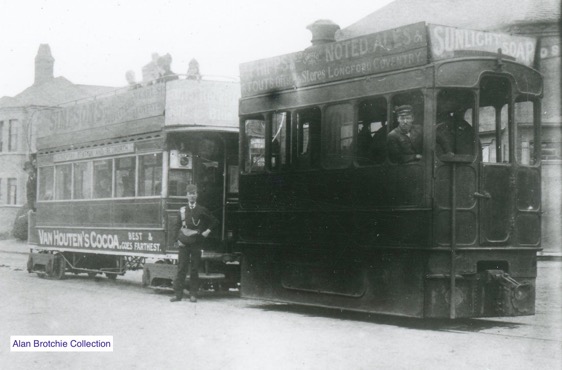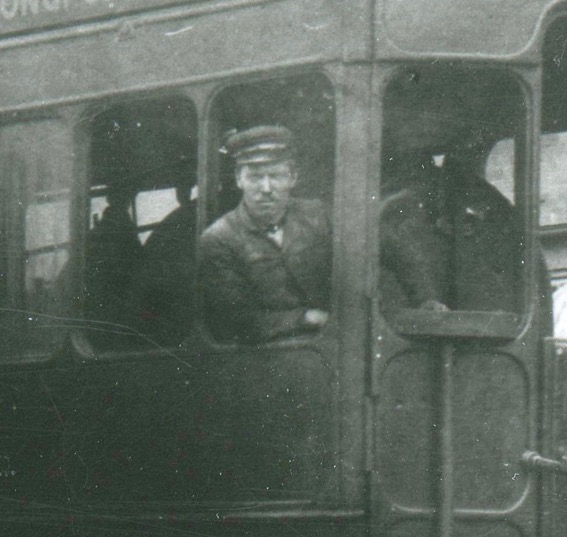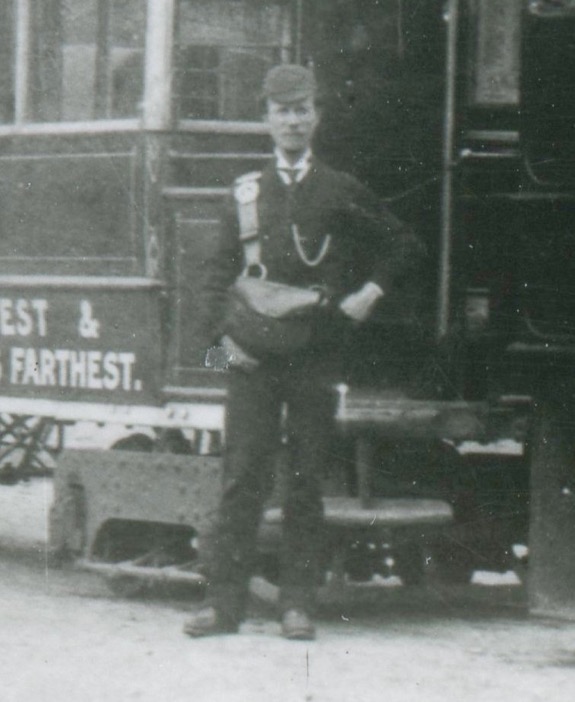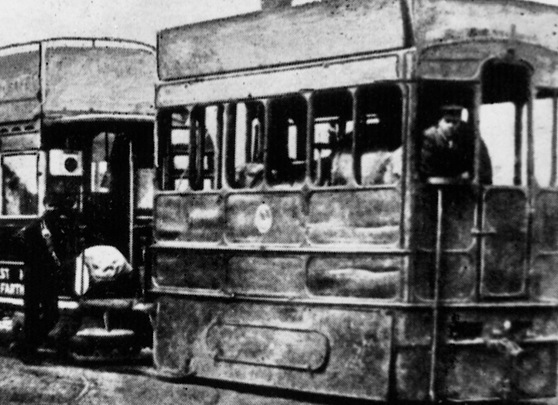Coventry and District Tramways
History
Although the Coventry and District Tramways Company obtained powers to build a tramway on the 26th August 1880, it appears to have experienced difficulties in raising the necessary finance, as it was subsequently forced (twice) to seek extensions to the time allowed for construction, these being approved on the 12th July 1882 and the 2nd August 1883. The tramway was to be built to a gauge of 3ft 6ins, no doubt constrained by the narrow streets of the city.
The track is believed to have been completed some time during 1883, though it was not until September of the following year (1884) that services commenced, using steam traction. The line was 5.75 miles long, and was built on the single line with passing loops principle. Commencing at a terminus in Eaton Rd, Coventry, opposite the London North Western Railway Company's station, the line ran roughly northwards, negotiating a steep hill on Bishop Street, before heading through Foleshill, Longford, and Exhall, to a terminus in Bedworth High Street.
Unfortunately, the C&DTCo was closely associated with an unscrupulous businessman by the name of Henry Osbourne O'Hagan, and a company he controlled, the City of London Contract Corporation. O'Hagan was well versed in extracting money from gullible share holders by luring them in with guaranteed high dividends (these often being paid out of capital rather than revenue), then using the money to award over-priced contracts to construction companies and contractors that he and his associates controlled. It is unclear whether O'Hagan was involved from the start of the scheme or whether he appeared on the scene as a result of the C&DTCo's inability to get the tramway built. Things would appear, however, not to have gone to the usual O'Hagan plan, there being so few shareholders that there was precious little money to extract. Predictably, following a large dividend of 7% in 1884, none was paid in 1885, and before long, the C&DTCo was in significant debt to the City of London Contract Corporation.
Bad news followed bad, as the C&DTCo soon found out that the number of passengers it carried was barely sufficient to break even, let alone service the debt or pay a dividend; furthermore, its attempts to obtain approval for extensions that would no doubt have improved its prospects, met insurmountable local opposition. The City of London Contract Corporation even ended up working the services itself between circa 1886 and 1889, presumably in a bid to run the enterprise at a profit. Ominously, a significant proportion of the accumulated debt was in the form of debentures, which had first call on the finances, and which were held by the City of London Contract Corporation.
The company was also greatly troubled by the inadequacy of its steam engines, four of them being unequal to the task of ascending the hill up Bishop St, their tribulations at this point becoming something of a standing joke amongst the populace of Coventry. By the late 1880s, with the company having reigned back on track and locomotive expenditure, the service had become ever more erratic, with engines and trailers, when they ran, regularly leaving the ill-maintained tracks. The company was also assailed by complaints from the two local authorities — Coventry City Council and Warwickshire County Council —both of which were concerned by smoke emissions, noise and the threat to public safety. By September 1889, the General Works and Watch Committee of Coventry City Council was recommending to the Board of Trade that the company's licence to operate steam trams not be extended beyond the initial seven-year period, which expired that month.
Remarkably, the company struggled on, mollifying the objections of the two councils, and somehow managing to wring ever-shorter licence extensions out of the Board of Trade. In February 1892, however, as the losses mounted, the company was seized by the debenture holders (i.e. the City of London Contract Corporation), and a receiver was appointed. Some time in early summer 1892, the receiver sold the tramway, which was still running a sporadic service, to William Graff Baker, who was an electrical engineer with connections to the US-based Thomson-Houston Company, by that time General Electric. Graff Baker's intention was to convert the tramway to electric traction, to which end he approached the city council to gain their buy-in, whilst at the same time endeavouring to keep some sort of service running with the steam trams. However, by late 1892, problems with the steam engines had reached such a head that it was impossible to carry on, services probably being withdrawn on or just before the 1st January 1893 when Board of Trade approval for their use is thought to have expired.
In 1893, a new company — Coventry Electric Tramways Limited — was formed to construct, equip and operate the proposed electric tramway (see link).
Uniforms
Although photographs of the Coventry and District Tramways undertaking are very rare, and shots showing tramcar crews in anything like close up are rarer still, those that have survived clearly show that drivers wore very similar attire to their railway counterparts, namely: heavy cotton trousers and jackets, probably light in colour (when clean!), along with soft-topped caps; the caps bore no badges. Conductors wore smart but informal attire: shirts, ties and jackets, along with whatever hat was the local fashion, in this case the soft-topped cap; no insignia of any kind (including licence badges) were carried.
Photographs of inspectors have not survived, and indeed, it is far from clear whether the C&DTCo ever employed them.
Further reading
For more information on Coventry's steam tramway, see: 'A History of the British Steam Tram', Volume 3, Pages 11-16 by David Gladwin; Adam Gordon Publishing (2006).
Images
Steam tram drivers and conductors
An unidentified Falcon steam tram and crew pose for the cameraman outside Foleshill Depot — photo undated, but judging by the relatively good condition of the trailer, probably taken in the 1880s.
An enlargement of the above photograph showing the driver, in cotton jacket and with a soft-topped cap. His appearance betrays the filthy nature of the job.
Another blow-up of the above photograph, this time showing the conductor. He is wearing smart, informal attire, along with a soft-topped cap. The round object on his cash-bag strap is probably the buckle.
A driver and a conductor pose with a Falcon-built steam tram and trailer outside Foleshill Depot — photo undated, but probably taken very late in the system's life (services probably ceased on the 1st January 1893 or the day before), given that the engine appears to be markedly more decrepit than the one in the previous photograph. Photo courtesy of the Tramways and Light Railway Society, with thanks to David Voice.